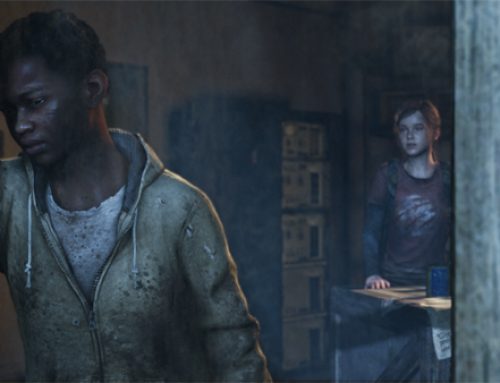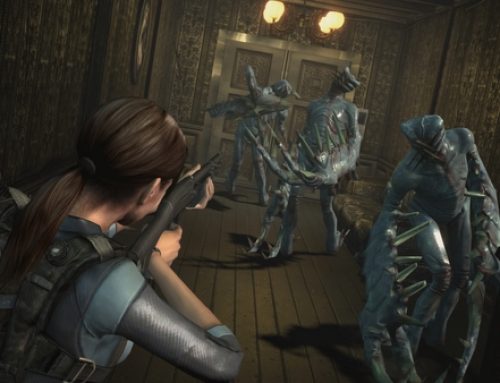
Like its predecessor, "Dead Space 2" eschews a traditional heads-up display, showing crucial information such as health and ammunition on Isaac's equipment.
One of the great debates among people who play a lot of shooters is whether we want our protagonists to be men of action and few words, so that we can project ourselves onto a relatively blank slate, or whether we want nuanced heroes with back story and dialogue.
With “Dead Space 2” (rated M, $60 for PC, Xbox 360 and PlayStation 3), Visceral Games switches things up. While “Dead Space,” released in 2008, featured mute engineer Isaac Clarke, “Dead Space 2” gives him a voice and personality.
It’s a risky move, as video gaming is littered with the carcasses of unlikable action heroes who deliver cornball, eye-rolling dialogue, and you don’t want your brainy hero to turn into one of those guys.
“Dead Space 2’s” Isaac, however, is so well-written and easy to empathize with, he leaps straight to the top of an admittedly short list of great shooter protagonists. The handful of jokes he makes are appropriately sarcastic and witty, and his guilt over urging his girlfriend, Nicole, to accept an assignment on the ill-fated USG Ishimura in the first game helps him come off as empathetic and sensitive, rather than as the usual too-cool-for-school meathead.
“Dead Space 2” finds Isaac aboard a massive space station called the Sprawl, on the verge of insanity as he wrestles with the death of Nicole and probably the post-traumatic stress disorder induced by mowing down the hordes of lightning-fast, zombielike creatures called necromorphs from the first game.
The game begins with Isaac being taken out of a sort of hibernation, amidst a new necromorph outbreak on the Sprawl. As Isaac sets about uncovering what’s been going on while he was away, and why there are necromorphs everywhere, he’ll be using a familiar set of tools to slow down and strategically blast the limbs off of familiar enemies, with a few new wrinkles.

Isaac Clarke's battles with his sometimes near-literal personal demons help humanize him and make him easier to relate to than the silent Mr. Fix-It he resembled in the first game.
While it’s true “Dead Space 2” tells a better story than its predecessor, the first “Dead Space’s” gameplay has a slight edge. Most notably, the sequel focuses more on battles against hordes of necromorphs rather than resorting to monster-in-a-closet scares or set pieces featuring enormous, room-filling necromorphs and zero-gravity combat.
While some of the gameplay tweaks are for the better, “Dead Space 2” felt like a less tense affair than its predecessor.
My having played through “Dead Space” with the difficulty set to “hard” in 2008, then playing the sequel on “normal” in 2011, might account for some of this discrepancy, but Isaac died a lot during my playthrough of the first game. The constant threat of death and necromorphs’ knack for popping up unexpectedly significantly elevated the feeling that danger lurked around every corner.
Even accounting for my down shift in difficulty level, it’s hard to escape the feeling that “Dead Space 2” has been made easier to appeal to a broader audience of varying skill levels.
Some of “Dead Space’s” signature moments were the boss battles in which you squared off against necromorphs the size of buildings. You usually needed to figure out some special tactic to advance. Admittedly, a lot of players probably got stuck on these fights and never finished the game, but surely there was a way to make some of these encounters easier without removing them entirely.
Also de-emphasized in the sequel is zero-gravity combat. There were few things more terrifying in “Dead Space” than being attacked while on a space walk, fighting off eerily silent or muted necromorphs in a vacuum while your space suit’s air supply counted down before your eyes. In “Dead Space 2,” the zero-G sequences are mostly puzzles. While it’s true no one wants to have to tackle brain teasers under a constant barrage, a couple of zero-gravity battles would have reinforced the notion that Isaac can be attacked anywhere.
Lastly, the Contact Beam, the most powerful weapon in “Dead Space,” has been upgraded in “Dead Space 2” to the point where it unbalances the game and makes things too easy.
“Dead Space 2’s” tensest moments should be the fights against hordes of necromorphs. But when Isaac has a weapon that’s capable of one-shot killing nearly everything in the game and also stops time and creates a stasis field once you’ve upgraded its alternate firing mode, it’s too much.
As if that weren’t enough, Contact Beam ammunition now takes up less space in Isaac’s inventory than in the first game, and it seems to be much more commonplace. I conserved Contact Beam ammo for battles against large numbers of enemies and pretty much cruised through the game’s last four levels unscathed. In theory, the ending of the game should be the hardest part.
Still, more difficult options are available. After finishing the game on “normal,” I intend to start a New Game Plus at higher difficulty levels (first “survivalist,” then “zealot”) but with all my original equipment. The hardest difficulty level, aptly named “hardcore,” requires players to begin with unupgraded equipment, and only allows them to save three times, with no checkpoints. If I fail to find the difficulty I hope for, hardcore mode ought to do it.
So where does that leave “Dead Space 2?” I put a premium on games with good storytelling, because it’s relatively rare, so my overall take on the sequel is that, despite its flaws, it’s just as essential as the first game. The universe behind the franchise is extremely well thought out and like nothing else in gaming.
Though the sequel adds multiplayer modes, the draw in “Dead Space 2” is single-player and New Game Plus. (I’ll have thoughts on the multiplayer posted Friday.)
The decision to give Isaac a personality pays off in spades, as he’s not only extremely well-written; he’s one of the coolest, most likable good guys in video gaming.



